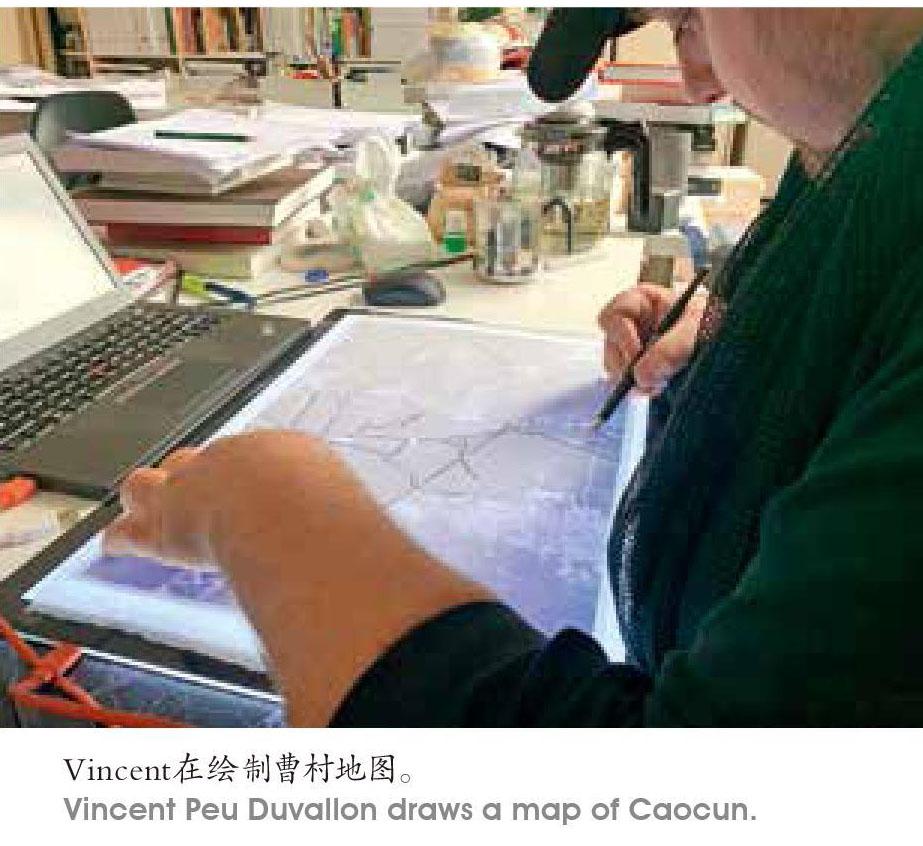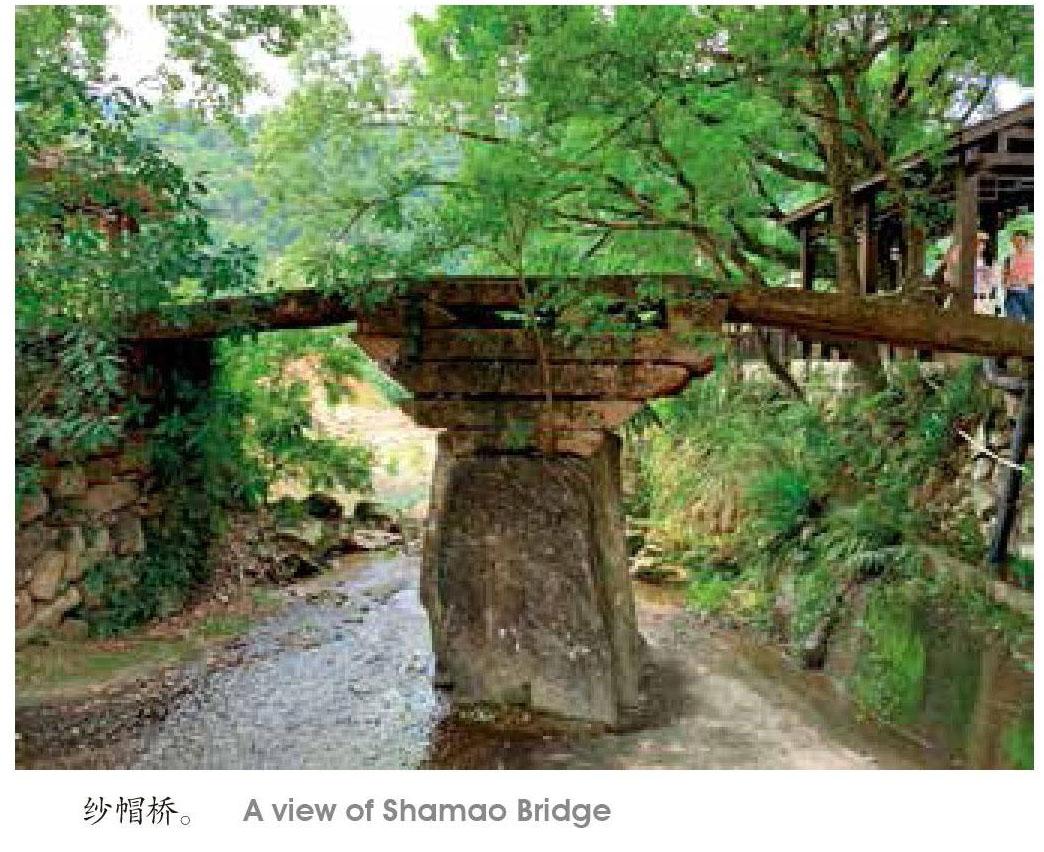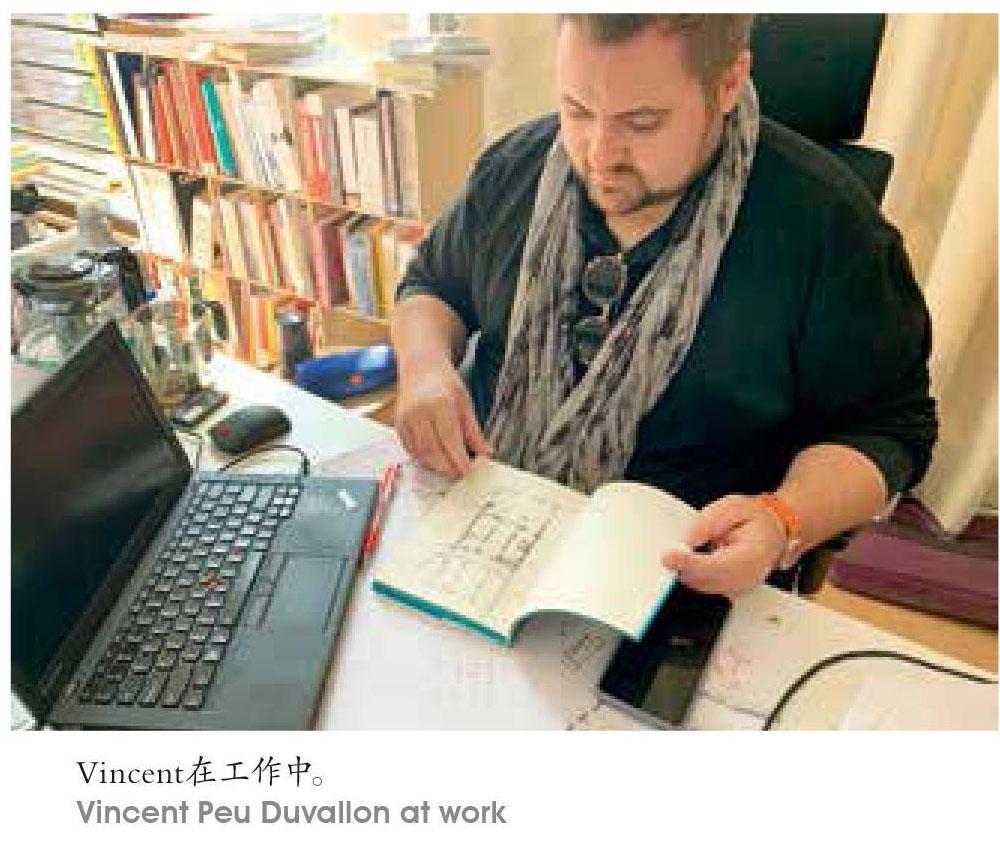发现曹村



我的名字是文森·佩杜瓦隆。我接受过建筑师专业教育,目前在温州肯恩大学教授建筑学课程。
虽说在温州已生活7年,城里城外都住过,却依然感觉还没看全、看够温州的旖旎风光和乡村景色。曹村镇就是这么一个地方。
曹村镇是同事向我推荐的。曹村镇是由14个村庄和一个有田园风光的山谷组成。在当地几位镇干部陪同下,我造访了曹村镇下属的村庄。这几个村庄是当地极力想对外推介的。之后我又多次去曹村,试图了解当地风景何以如此迷人。
法国地理学家奥古斯丁·伯克将风景定义为连接人类与周边环境的纽带。他认为风景文明有五大标准:风景有一个或几个名字,有关于风景的文献,有风景画,有建筑物可欣赏,有花园。他因此认为风景起源于中国六朝,尤其在现在的江浙一带有特别发展。奥古斯丁·伯克特别指出,六朝时期的画家宗炳首次将风景的形与神相关联,而欧洲则在一千年后的文艺复兴时期才形成风景文明。
在我看来,风景保护在中国尤其在浙江具有特别的意义。
位于温州南部的瑞安市曹村镇被列为浙南地区首个乡村保护项目之一。这一地区的风景,历经本地居民500多年的打造,山谷与周围的村庄形成了别具一格的风光。
尊敬与保护
这一保护项目令人赞叹之处在于,历史建筑虽然大多已杳无踪迹,但当地政府却保存了这一风景文化的精华,即田园风味浓郁的风景、周围的村庄以及村庄与地形完美的关联。
许岙村是曹村镇14个乡村中的一个。村中的许岙亭,是曹村仅存的若干建于20世纪之前的古建筑之一,与许岙亭相对的永胜桥也是清朝建筑。许岙亭至今依然能遮风挡雨,同时也是村民们集体观看电视的场所(这是村民所喜欢的一种交流形式,虽然他们家里都有电视)。
许岙亭与永胜桥仿佛解说词,令人赞叹地讲述华东地区公共空间与水的密切关联。梅龙溪沿许岙村蜿蜒,村民沿溪而居,梅龙溪仿佛是主街:是交通和公众活动的场地(在许岙亭),也有洗涤、垂钓等与水相关的各种活动。
沙帽桥完美地体现了人与自然那种若即若离的关系。它的巨大的桥墩,显然是一块溪中的巨石,本地人在巨石之上添加了一些体积较小的石头,构成桥体,横跨溪流。
当地农民在桥边不远处建造了一个巧夺天工的装置,抽取溪水灌溉农田。农民在风景改造中体现的简洁和经济的方式甚是美妙,完全有必要作为宝贵的文化遗迹予以保留。
老台门是曹村的老古董之一,建于晚清,西方古典建筑的风韵依稀可见。老台门还是绝佳的取景镜框,古建筑成为观看者与风景之间的标尺。房屋坐落在山脚,从前与田野毗连。屋舍与农田之间,过去有院子,现在老墙残存,但保存几近完好,足以让人畅想当时从内向外可以看到怎样的风景:风景并非现代全景式的,而是半遮半掩的。当时的墙,遮住了近在眼前的日常乡村景色,却能显示出天边秀美的山峦。
新动态
曹村镇是国家级美丽乡村建设示范点。除保护外,当地政府设计了一系列景点,这些景点完美地阐释了曹村镇风景和文化的主要特点。
梅龙书院是旧址重建。在这里,我觉得可以将文化风景定义为学者风景:学术世界(学者与书院)与中国文化氛围中的自然环境之间,存在着由来已久的关联。这让我想起诸如屏山书院那样的韩国新儒学书院。屏山书院体现的不仅是儒教文化对周遭环境的深厚敬意,还有对学院周围山地风景的深刻了解。梅龙书院还让我触景生情地想到了浙江、江西、江苏一带文人写作的风景诗。我觉得,这种学者与自然环境的密切关联是中国特有的,欧洲直到15世纪才将文化内涵赋予风景。
第一次造访曹村时,从塔上远望,看见赵山渡引水渠从山谷的一边横贯到另一边。从规模上讲,水渠也算是能与风景相提并论的唯一建筑物(此处将基本建设项目视为建筑)。这让我想起瑞士建筑师盖凡提1970年在瑞士提契诺设计的一个美丽项目:高达5米的桥边上有众多公共游泳池首尾相连,泳者可一边游泳一边观赏瑞士美丽风景。从曹村这个水渠,我们观赏山谷美景,不必看古老建筑,也不必听各种逸闻趣事,而是要沉思几百年以来人们如何在这里居住并造就风景,沉思这里的乡村文化历史。
垟心岛公园位于山谷中央两大河流交汇之处。为吸引游客,当地政府设计了这个公园。公园是一个亲水平台,游客可漫步,可垂钓,亦可在草地上悠闲地躺着消磨时光。
这里我们要理解的,并不仅仅是讨论小组标注的不同要点,而是几百年来当地农人既要与洪水抗争又要灌溉农田这一事实。
在曹村,虽说大多数砖木建筑均已被现代水泥结构取代,但最重要的却得以保留,那便是它的风景。这里的风景不能与旅游杂志上照片中的美轮美奂的风景相提并论,但却彰显多少个世纪以来人与自然和谐相处的真实关系。
曹村对文化风景的保护是一项实验,我希望这一实验会给中國其他地区带来启发,让风景承载文化。
风景保护远不止于肉眼可见的遗产或者地区旅游名牌,风景保护是让我们向祖先学习如何与环境和谐相处,如何将环境改造得既成为能让人丰衣足食又能持续发展并具有活力。风景保护涉及到美学(我们如何审视环境)、伦理(工作者建造的环境)和环境方面的诸多内容。
Discovering Caocun Cultural Landscape: Landscape Preservation in Wenzhou Region
By Vincent Peu Duvallon (France)
My name is Vincent Peu Duvallon. I am trained as an architect in France, and I am currently teaching architecture in Wenzhou-Kean University.
Although I have lived in and out Wenzhou for more than seven years, I still have to discover new amazing places and landscapes. Caocun town, actually a network of 14 villages around an agricultural valley, is one of these. Recommended by my colleagues, I have been guided by the local public servants through the several sites that they decided to promote. But amazed by this amazing landscape, I have been there again several times since my first visit to try to understand what makes Caocun so particular.
French geographer Augustin Berque defines landscape as the mediation between human kind and its environment. What defines a landscape civilization for him is the combination of five criteria: one or several names to name landscape, a literature about landscape, landscape painting, an architecture to enjoy landscape, and ornamental gardens. Therefore he situates the birth of landscape during the period of the Six Dynasties (317-589) in China, particularly the region around Jiangsu and Zhejiang. He particularly insists on the work of Zong Bing (宗炳) who related the physical characteristics of landscape to its spiritual value. Europe would only become a landscape civilization during the renaissance, one thousand years later. Therefore for me, landscape defines Chinese civilization and landscape preservation takes a particular dimension in China and particularly in the region of Zhejiang.
The Town of Caocun, in Ruian, south of metropolitan Wenzhou is one of the first large scale preservation operations done in the south of Zhejiang. Its landscape had been forged by its inhabitants for more than 500 years giving the valley its particular form.
Respect &Preservation
What is amazing in this preservation operation is that although most of its historical architecture has disappeared, local authorities have been able to preserve the essence of its culture: the agriculture landscape, the settlements around and their relation to the topography.
Xu‘ao village is one of the 14 villages in Caocun. In the middle of the village,there is a Xuao Pavilion, which is one of the last architecture heritage built before the 20th century in Caocun, and the Yongsheng Bridge facing it is an amazing infrastructural heritage also dating from the Qing Dynasty. And the pavilion is still in use, providing shelter and space for the villagers to watch TV.
This pavilion and the bridge are an amazing narrative of this strong relationship that links water in public space in Easter China. The Meilong Creek structures the entire Xuao village settlements, with its construction on both sides forming the main street, but also organizes the public life: communication, public activities (in the pavilion) as well as all activities related to the water: washing, fishing and so on.
Shamao Bridge is a beautiful example of this ambiguity between what belongs to the realm of nature and what belongs to the manmade. Its huge column is obviously a massive stone that was there and local people just added some small stones for the lintels that link the both edges of the river.
In addition, around this bridge, local farmers have developed a very ingenious apparatus to take the water from the stream and redirect it for agriculture irrigation. The amazing economy of means in the farmers landscape crafting is beautiful, and need to be preserved as cultural treasures.
Laomentai (Old Gate) is one of the few pieces of heritage in Caocun. We can date this architectural fragment easily to the late Qing dynasty with its subtle influences from western classical architecture. More than the gate itself, what has been preserved is the way it frames the landscape, and how this historical architecture provides an intermediary scale between the viewer and the landscape. The house is located at the edge of the fields, at the bottom of a mountain. The wall that surrounded the courtyard between the house and the fields is almost intact and gives us an idea of the way landscape was perceived: not all revealed like a modern panorama but partly hidden. The wall hid the daily agricultural life but didnt hide the beautiful mountains on the horizon.
New Developments
Caocun is part of a national landscape preservation program and is one of its experimental sites. Besides preservation, local authorities have designed a series of sites that narrate the key landscape and cultural features of the area.
Meilong Academy is a reconstitution of an old house. Here I think we could define cultural landscape as a scholarly landscape: this long tradition of relationship between the academic world (scholars and academy) and the natural environment in the Chinese cultural sphere. It reminds me of the Neo-Confucian academies in South Korea, such as the Byeongsan Seowon, which embodies the profound respects that Confucian culture has for natural environment but also the high knowledge of the mountainous landscape they develop in the way that settles their academy in its settings. It also reminds me of all the landscape poetry that have been done by scholars, in this same region, in Zhejiang, Jiangxi and Jiangsu, and that structured our ways of perceiving landscape. I think this relation between scholars and the natural environment is very specific to China and I cant see in European tradition such a cultural construction of the landscape until the 15th century.
During my first visit to the site, and looking at the valley landscape from the tower we saw previously, I was amazed by a long construction—Zhaoshandu Aqueduct, which is the only piece of architecture (we consider here infrastructure as architecture) that has the scale of the landscape, and crosses the valley from one side to the other. It immediately made me think of a beautiful project that the Swiss architect Aurelio Galfetti did in Ticino in the 1970s: a series of public swimming pool arranged along a 5-meter-high bridge that gives the users an amazing perspective on the Swiss landscape. From this aqueduct in Caocun we can grasp the treasure of this valley, not some old buildings or some specific anecdotes, but the centuries old history of man inhabiting landscape, the cultural history of this countryside.
Yangxindao Park is located at the heart of the valley, at the confluence between two of its main rivers. In order to attract tourists, the local authorities have designed this interesting park that provides a more recreational access to the water, for fishing, for laying or for strolling.
What we have to understand here is not necessarily the different points that are marked on the panel, but its how this landscape has been built over centuries by farmers fighting with (the) flood, fighting with irrigation for their fields.
In an area where most historical wood-and-brick architecture has been replaced by concrete structure, Caocun has preserved what is the most important: its landscape. Not an ideal picture you see in the travel magazines, but an authentic relationship to the natural environment, transformed by mankind over centuries of settlements. Its agriculture landscape but also the villages, that even doesnt count much of historical building, preserved its original footprint, between the fields and the mountain, along the water, on the edge of landscape. Caocun heritage is not only its natural or manmade features. It is the way we understand our relation to the environment, and how we inhabit the world. This is what had been preserved and what constitute a universal treasure.
The preservation of Caocun cultural landscape is an experiment that I hope will inspire other regions in China, where landscape is so profoundly anchor it its culture.
Landscape preservation goes beyond tangible heritage, and touristic regional branding. It gives us a lesson from past generations of how to relate to the environment, and transform it into a productive, sustainable and resilient landscape. Landscape preservation addresses aesthetic (our perception of the environment), ethics (the environment as the built by the working class) and environment issues.

